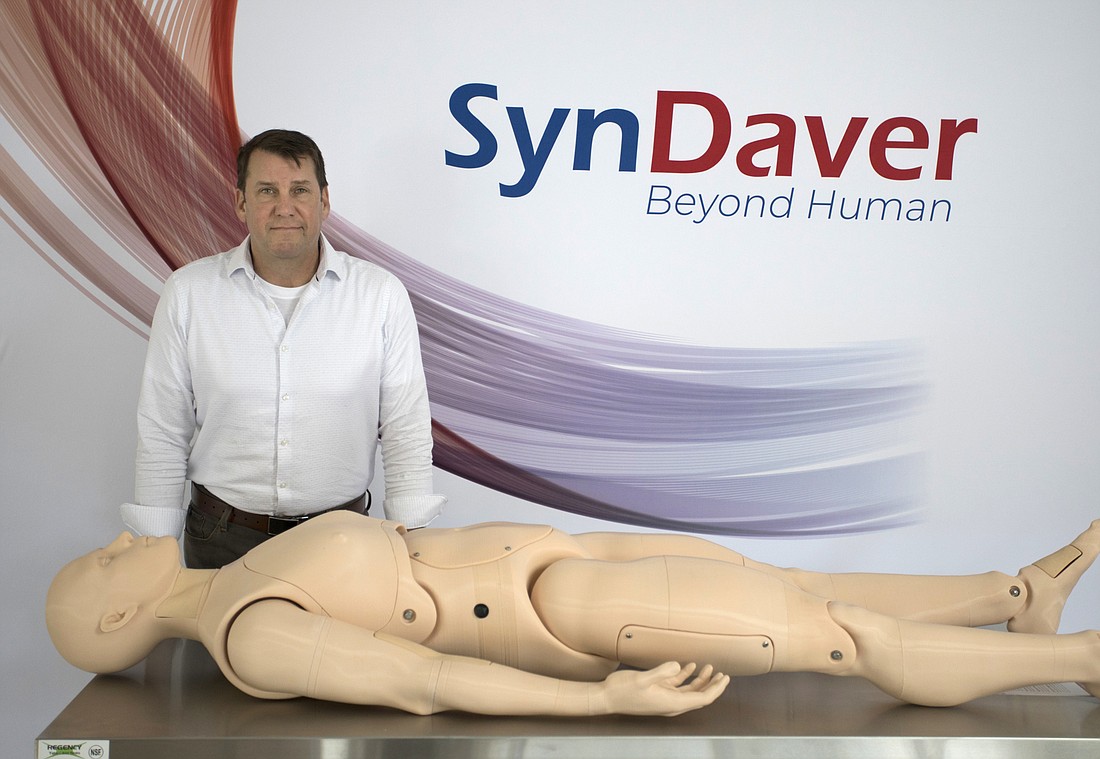SynDaver, the Tampa biotech firm that makes incredibly lifelike artificial humans and animals — most recently a fake frog used in biology class dissections — has long talked of going public. More than four years ago, 2018 was touted as the year Wall Street would welcome it to the party.
The company has since waited it out, especially while the IPO market cooled. More recently, in a signal an IPO could finally be on the horizon, the company has increased its sales team, tripling it from seven to 21 people in the fourth quarter of 2019. It also announced plans to add 15 more reps in the first quarter of 2020.
'We tend to not really build things according to demand. We've got a strategic vision for the company and we're slowly prosecuting that.' Dr. Christopher Sakezles, founder and CEO of SynDaver
Founder and CEO Dr. Christopher Sakezles says the IPO is being planned for sometime in the next four to six quarters. With that goal in mind, Sakezles, 53, has built out the firm’s C-suite over the past couple of years, adding financial executive Terence Terenzi as CFO; Bill Wright, a veteran of the medical device industry, as president; and medical simulation expert Nadine Baez as vice president of research and commercialization.
Launched in 2004, SynDaver and its products have appeared on Shark Tank, Mythbusters and Grey’s Anatomy. Its sales have grown by an average of 33% year-over-year from 2017 to 2019 (Sakezles declines to disclose revenue figures). It handed out $1.5 million in stock options to employees and raised salaries by 20% across the board. All the markings of a company ready for the public markets. And still, no IPO.
One internal reason for the slowed-down IPO process, a key to the company's success, runs somewhat counter to what's traditionally expected of publicly traded companies: patience in getting products to market. “We tend to not really build things according to demand,” Sakezles says. “We've got a strategic vision for the company and we're slowly prosecuting that.”
SynDaver’s business model, the CEO explains, is an inversion of the tech sector’s standard go-to-market formula, in which you roll out a workable product and then tweak it. In SynDaver’s case, it perfected the most difficult item in its product lineup first — synthetic humans and human organs — before turning to animals.
“We’re replacing live animals,” Sakezles says. “All of the animals that are currently used in dissection at the secondary education level. Not just the frog. We launched a cat … and we’ll be doing a fetal pig. Pretty much anything that’s used now in dissections, we’ll be creating a synthetic analog for it.”
Although SynDaver made its bones, pun intended, with synthetic human cadavers for the higher education market, the foray into secondary education could prove more lucrative. And it’s not necessarily due to ethical concerns about animal dissection. Sakezles says a lack of available corpses to dissect has created a big opportunity.
“It’s become more difficult for users who want to use cadavers to actually find them,” he says. “Supply issues are something that stands in the way of educational objectives. If you can’t get the product, you can’t do the labs. Ethics are a consideration but they’re not the primary driver and never have been. I’m an animal lover, myself, but that isn’t what motivated me in the beginning, and it’s not what motivates me now.”
And frogs, dogs and cats aren’t all. Sakezles plans to spread SynDaver into entirely new markets in 2020, most notably with a line of dry- and wet-tissue 3D printers. The firm will also introduce new engineering kits, dissection equipment and silicone anatomy products for use at the high school level.
“We’re making a major move into the secondary education market with a bunch of new products and expanding our sales force massively,” Sakezles says, adding he projects revenue to grow by a whopping 500% in 2020. “It’s a strategy that we’re following. We started at the ultra high end — medical device development — and now we’re developing one market at a time.”
As that strategy comes to fruition, expect “more and more buzz” about the company, says James Judge, who handles communications strategy for SynDaver. Sakezles, Judge says, is “Tampa’s Elon Musk.” Like Musk’s Tesla, Sakezles’ SynDaver hammers away at the boundaries of what’s thought to be possible. A blue-sky, long-term goal, Judge says, is the creation of 3D-printed synthetic organs that can take the place of organic tissue.
“They would have somebody's DNA on file,” he says, “and if something happened to their lungs or their liver, [SynDaver] would be able to print them a new one.”






